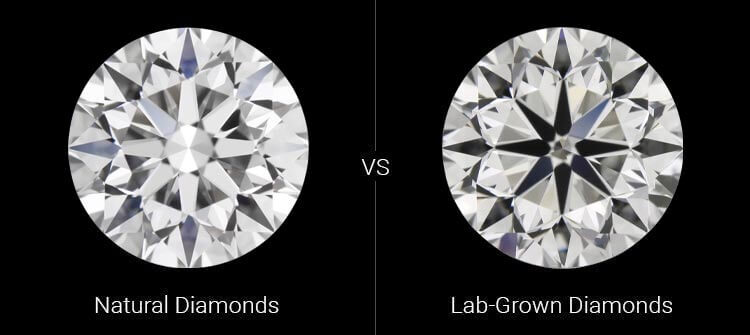
Diamonds have for some time been an image of extravagance, love, and responsibility. However, as of late, lab made diamonds have arisen as a popular alternative to real, mined diamonds. With advancements in innovation, it’s presently conceivable to create diamonds in a lab that are almost indistinguishable from real diamonds. Yet, how do lab made diamonds vs real diamonds genuinely compare? This article will investigate the distinctions and assist you with making an educated decision.
Table of Contents
What Are Lab Made Diamonds?
Lab made diamonds, also known as engineered or man-made diamonds, are created in a controlled laboratory climate. Dissimilar to real diamonds, which are framed profound inside the Earth more than billions of years, lab made diamonds can be delivered surprisingly fast. The cycle copies the natural formation of diamonds, using either high strain and high temperature (HPHT) or chemical vapor affidavit (CVD) strategies.
With regards to lab made diamonds vs real diamonds, the fundamental chemical structure is the same. Both are made of carbon atoms arranged in a crystalline design, which gives diamonds their famous hardness and brilliance. However, the way they are framed is what separates them.
What Are Real Diamonds?
Real diamonds, also known as mined or natural diamonds, are shaped through serious heat and strain north of billions of years profound inside the Earth’s mantle. These diamonds are then brought to the surface through volcanic ejections, after which they are mined, cut, and cleaned to turn into the shocking pearls we find in gems stores.
In the lab made diamonds vs real diamonds debate, the allure of natural diamonds often lies in their rarity and the fact that they are shaped by nature. Each real diamond has its own extraordinary characteristics, and the idea of possessing something that has been billions of years in the making can very appeal.
Appearance: Can You Differentiate?
Quite possibly of the greatest inquiry in the lab made diamonds vs real diamonds conversation is whether you can differentiate them by appearance. To the naked eye, lab made diamonds are virtually identical to real diamonds. They have the same clarity, sparkle, and brilliance. Indeed, even master gemologists often require specialized hardware to recognize the two.
Both lab made diamonds and real diamonds are graded utilizing the same criteria: the famous 4Cs – cut, variety, clarity, and carat weight. The key distinction isn’t in appearance, yet rather in beginning. Thus, in the lab made diamonds vs real diamonds comparison, in the event that you’re searching for visual appeal alone, the two types will dazzle equally.
Durability and Life span
As far as durability, lab made diamonds vs real diamonds are on par with each other. The two types of diamonds have the same hardness, ranking 10 on the Mohs scale, which makes them very durable and resistant to scratches. Whether you’re considering a lab made diamond or a real diamond for an engagement ring, both will stand everyday hardship.
There is no significant distinction in how long lab made diamonds last compared to real diamonds. They are equally durable and can be passed down through generations, making them a dependable investment, regardless of their starting point.
Value Contrasts Between Lab Made Diamonds vs Real Diamonds
One of the main distinctions between lab made diamonds vs real diamonds is the cost. Lab made diamonds are typically 20-40% more affordable than real diamonds of comparable size and quality. This is because the creation interaction for lab made diamonds is faster and doesn’t include the broad digging and labor expected for real diamonds.
For those on a careful spending plan, lab made diamonds can offer a more affordable choice without settling for less on quality or appearance. Then again, real diamonds will quite often hold their value better over the long run because of their natural beginning and rarity, which is another consideration in the lab made diamonds vs real diamonds debate.
Environmental and Ethical Considerations
Another critical factor in the lab made diamonds vs real diamonds conversation is the environmental and ethical implications. Mining real diamonds can have significant environmental impacts, including habitat obliteration, water contamination, and carbon discharges. Additionally, worries about unethical mining practices, including “blood diamonds” or struggle diamonds, have driven a few buyers to search out additional ethical alternatives.
In contrast, lab made diamonds are viewed as an all the more environmentally cordial choice. Since they are created in a controlled laboratory climate, they don’t include mining or upset environments. From an ethical standpoint, lab made diamonds offer peace of psyche for shoppers worried about the potential human freedoms abuses associated with some real diamond mining operations.
Which Would it be advisable for you to Pick: Lab Made Diamonds vs Real Diamonds?
Picking between lab made diamonds vs real diamonds ultimately relies upon your needs. On the off chance that you’re searching for a more affordable, environmentally cordial choice, and wouldn’t fret that the diamond was created in a lab, then, at that point, lab made diamonds could be the ideal decision. They offer the same beauty and durability as real diamonds at a lower price tag.
Then again, on the off chance that you value the rarity and natural beginning of a diamond and will pay a premium for it, then a real diamond may be the better choice for you. The extraordinary history and imagery of real diamonds add to their appeal, making them an immortal decision for many.
Conclusion: Lab Made Diamonds vs Real Diamonds
In conclusion, while comparing lab made diamonds vs real diamonds, both have their own arrangement of advantages and disadvantages. Lab made diamonds are affordable, eco-accommodating, and ethically delivered, while real diamonds offer natural rarity and long haul value. Whichever choice you pick, you can partake in the brilliance and elegance that main a diamond, whether lab-made or real, can give.
